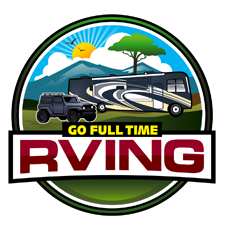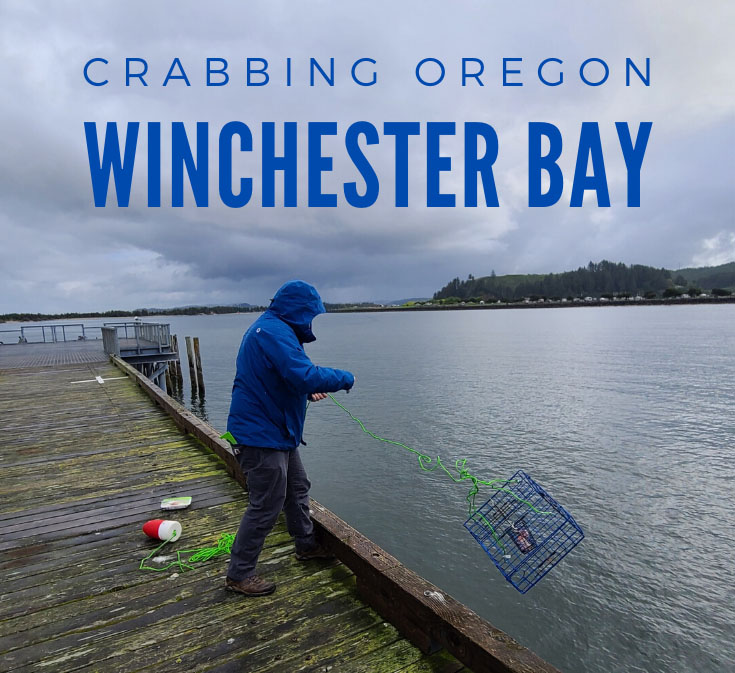Crabbing is one of the most unique experiences you can have on the Oregon coast! And Crabbing Winchester Bay can be one of the most rewarding places to give it a try. Whether you are crabbing from a boat or off one of the town docks it’s a fun activity for the whole family.
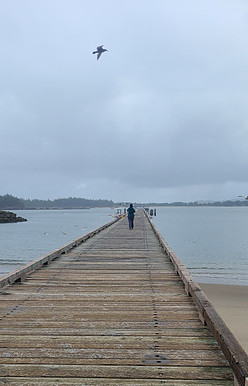
The pursuit of Dungeness Crabs along the Oregon coast is popular with locals and visitors alike. Nearly every river that empties into the Pacific Ocean in Oregon has a town nestled at its mouth.
Each town likely has a public fishing dock and a marina or bait shop that will provide everything needed for crabbing. The village of Winchester Bay is no exception. The Umpqua River is one of Oregon’s largest estuaries and offers some amazing crabbing opportunities.
Besides crabbing, this is a great spot for fishing, camping, or just enjoying the bay. Even if you’re not into catching your own crab or fish, you can treat yourself to some of the freshest seafood in Oregon at one of the restaurants in Winchester Bay.
Growing up in Oregon I had the opportunity to do a lot of crabbing with my Dad. We mostly crabbed at Tillamook Bay near Garibaldi but would venture out to other bays along the coast.
It’s been over 30 years since I last went crabbing so when I heard that Oregon lifted its restrictions on non-resident crabbing due to the Coronavirus Stay In Place Orders I was anxious to toss some pots and try our luck.
This post contains affiliate links. As a participant in Amazon Associates and various affiliate programs, we are compensated when qualifying purchases are made through our referral links at no additional cost to you. Full Disclosure
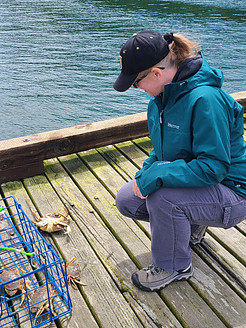
The Winchester Bay Crab Dock offers a great way to test your luck if you don’t have a boat. The public fishing pier juts 700 feet into the river and offers plenty of room for crabbing.
We arrived about two hours after low tide (which was too early) and had the whole dock to ourselves. Crabs are very sensitive to tides, and the best time for crabbing is generally a couple of hours before and after high tide when the tidal currents are weakest. Next time we’ll arrive closer to high tide.
After setting up our single crab pot we filled the bait box with three chicken legs and tossed the pot into the water. Letting the pot soak for nearly an hour we came back and pulled it. Our excitement grew as the pot came into view and we saw it filled with crabs. Once the pot was back on the dock we found 11 Dungeness Crabs feasting on our chicken. Unfortunately, none measured 5 ¾” or larger.

Refilling the bait box with chicken legs we tossed the pot back into the water for a shorter 30-minute soak. This time we pulled another full pot and again all were too small except for one. That one was a female which you’re not allowed to keep. So back in the water she went and shortly after filling our bait box for the third time the pot followed.
After another 30-minute soak and we pulled the pot again only to find six small crabs inside and the side of our pot open allowing any others to escape. We put the trap back together and tossed it in one last time. Our final pull of the pot found another eight crabs, none big enough to keep. Either way, it was a fun day, and something we will spend more time doing during our last days in Oregon this trip.
Oregon Crabbing Licenses
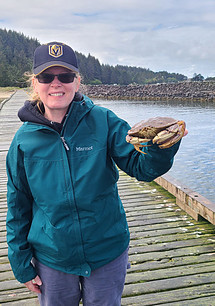
Oregon requires a shellfish license (separate from an angling license) for anyone over 12 years old to harvest crabs and other shellfish, including bay clamming in many of the same estuaries.
According to Oregon crabbing rules each crabber can have up to three crab rings, pots, or lines, So a couple of crabbers could have a half dozen traps, which would probably be enough to keep you reasonably busy pulling.
Recreational crabbers using boats must mark all of their floats with their first and last name and at least one of these things: permanent address, phone number, ODFW identification number, or boat identification number. Check ODFW regulations for more details.
State biologists also suggest that sport crabbers use sinking lines, durable floats, escape rings, and untreated cotton lines (so if your pot is lost the string will deteriorate and release the trapped crabs).

Crabbers also can use baited lines to catch crabs. These often include loops of line on a fishing pole that help tangle up the crab long enough to land it.
You can also catch crabs with your hands, dip nets or rakes. These methods are most common in beach and tidal pool areas when crabs move into shallows. Sometimes crabs get trapped in pools during low tides.
Marinas and bait shops in Oregon coastal towns usually rent or sell the more popular crabbing bait and supplies, and many sell licenses and have rental boats as well. Licenses are also available online.
Oregon Crab Limits
Daily limit of 12 male crabs, 5 ¾” minimum size for Dungeness crab. Correct size is measured as a straight line across the back (caliper measurements) in front of, but not including the points. It is prohibited to catch and keep female crabs.
Crabbing is open in estuaries (i.e. bays), beaches, tide pools, piers, and jetties year round 24 hours a day.
Crabbing In Oregon How To
Crabbing is pretty straightforward. And doesn’t require a lot of gear. We used just one crab pot set up that cost us about $50. You can also rent gear from a lot of marinas and bait shops along the coast.
Step 1: Bait Your Gear
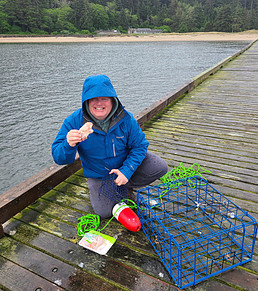
People use all kinds of bait: chicken, turkey, fish heads or carcasses, shad, clams, and more. We used chicken legs on this trip.
Seals, sea lions, and other fish may try to steal some bait like fish heads. I once had a sea lion grab my crab pot and give it a big shake trying to get my salmon head bait out of it. A bait bag or box is a good way to avoid the problem. You can also use bait they don’t normally eat, like turkey, or avoid areas where they are prevalent.
Step 2: Drop Your Pots
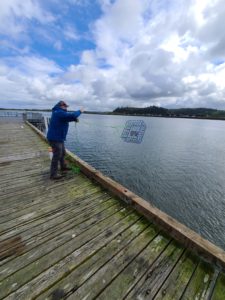
Start setting your pots where you hope to find crab. The ideal depth I’ve found for Dungeness Crab is between 20 and 30 feet deep. Space your pots out so that you aren’t competing against yourself. Allow approximately 15 to 30 minutes before pulling them up, and if you can really get into a groove, you should be able to continuously check them.
Step 3: Retrieve Your Pots
Once your pots have been in the water long enough, it’s time to pull them and check for crabs.
Step 4: Sort the Crab

Once the crab pot is pulled quickly sort through the crabs. You’re only allowed to keep males, so that’s the first filter. If it is male, you then have to measure the crab to ensure that it is at least 5 ¾” across the back (NOT including the spines).
This is the fun part and at first, you’ll want to touch every crab. Eventually, you’ll get the hang of it and can eyeball each pot by shaking it around. Pull out the ones you think are big enough and check it they are male. Dump the others back into the water then toss the pot back in the water so you can move on.
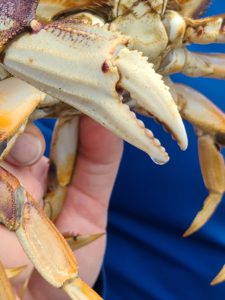
Pro Tip: Grab crabs by holding them between their back legs. It’s harder for them to reach back and pinch you. While any crab pinching you hurts, beware of the small crabs. They have less area for their pincers to reach over and for some reason, they seem faster at pinching.
Step 5: Store Your Keepers
Store your male crabs that measure at least 5 ¾” in a cooler or 5-gallon bucket. Don’t fill with water you’ll end up drowning your crabs due to lack of oxygen.
Step 6: Cook Your Catch
In my opinion, the simplest and best way to prepare your catch is to just boil them in salt water. I have boiled them in ocean water I brought home or just add some salt to fresh water and you’re good to go. About 15 minutes of boiling for a 2 lb crab is perfect.
Other Things to See and Do on the Oregon Coast
Conclusion
Oregon has some amazing crabbing opportunities all along the coast. Whether you are crabbing from a boat or from one of the crabbing/fishing docks you’re bound to have a great time. Next time you’re on the Oregon Coast give it a try.
We hope you found this article helpful. If you’ve been crabbing on the Oregon Coast let us know where you went and how you did. Or leave a question or comment below. We’d love to hear from you.
